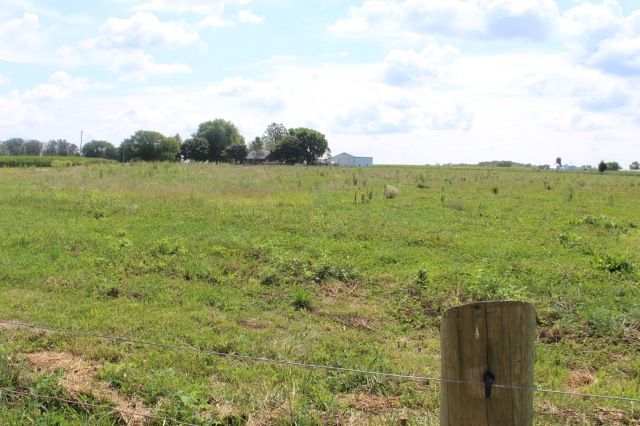Mowing is something that should be generally avoided, but can be just the right prescription if weeds or over grown pasture plants are what ails you.
Mowing uses fuel and time, puts wear and tear on machine and man (or beast), and there is the upfront cost of having the equipment to mow with. In general, most people mow WAY MORE than is necessary or healthy. Lawns by no means need to be mowed with the frequency commonly observed. I think far too many folks are ruled by conventional thinking that if you don’t mow your lawn every week you are poor and/or trashy. I certainly thought this way in the past.
In most ways a pasture is just a lawn, but with a nutritional as well as a recreational purpose. And pastures too can be over-mown, yet they seldom are. I will confess to letting mine get overgrown occasionally. Since pastures are large, mowing them takes time and is tiresome, and few people are impressed with an evenly mown and attractive pasture (though I am). Fortunately, mowing is far more beneficent to a pasture than it is to a lawn, and most sick pastures would do well to have a solid dose of mowing before any other renovation scheme is undertaken.
Since ideal pasture plants are generally low-growing and tolerant to grazing they are also tolerant to mowing. Mowing therefore “sets back” almost all weedy plants that like to colonize pastures relative to the good pasture plants. Even Canada Thistle cannot survive frequent mowing and the competition of grasses like bluegrass and ryegrass and Timothy and legumes like white clover or red clover for long. Mowing helps keep pastures “clean.”

There different mowing intervals are in this picture. The upper left was mown about 1 month ago, the upper right was mown last week, and the foreground was mown two months ago.
Mowing also resets the biological clock of most good pasture plants. If you have grasses in flower, mowing them makes the plant think it needs to renew its vegetative growth (the touchstone of herbivore nutrition) in order to send up another flower in order to set seed. Often, all it takes is a single mowing mid-summer (and some rain) to get pastures to “renew” themselves and make all those little charts you see in extension service bulletins about the “summer slump” look silly. That is just the time of year when it can go without rain, and when people get lazy about mowing. If you get rain and mow there is hardly any “summer slump.”

Overgrown grass, weeds, and ragweed stubble…oh my! Mow this and in a week it will look great.
There is a cost to mowing. Not only time and wear and tear, but also fuel (if machinery is used). And mowers vary greatly in their relative fuel efficiencies. Sickle-bar mowers are very efficient. Since all they do is cut and let gravity do the rest of the work, they get much more mowing done per gallon of fuel. In fact, I can mow an acre with my sickle-bar mower using only a quart of gasoline (sometimes less). Rotary mowers (bushogs, regular lawn mowers, disc mowers) are always less efficient, because fuel is doing much more of the work. Rotary mowers not only cut, but also lift, move, and discharge. All these steps, though small, when multiplied by billions of grass blades, turn out to be considerable. My rotary mower easily takes 3-4x the gasoline to mow an acre, and I am certain that if I was riding on a four-wheeled tractor which had to push much more weight around, that it would use about an equal measure of fuel just propelling itself.

This pasture was weedier than one one above, not it looks great. If we get some more rain, it will look like springtime again.
I’ve always liked watching a horse or pair of horses pulling a ground-driven sickle-bar mower. Though almost all of these implements are going to be old, and are now probably junky, there is no reason why excellent modern ones can’t be made. To me, this is the ultimate in efficient mowing, and it would give horses something to do. But in general, to mow pastures more and lawns less would be my recommendation.
